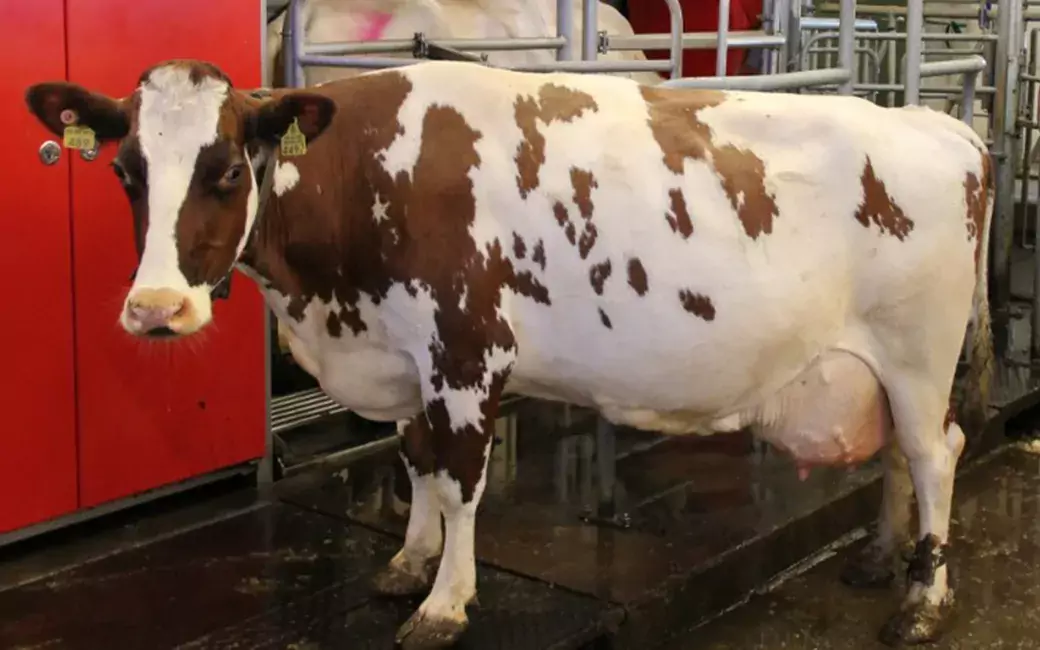The 'Climate smart feeding solutions for Finnish milk production sector' project researches the potential for reducing ruminal methane emissions using a feed additive. The Bovaer® feed additive can reduce ruminal methane emissions by 30 percent and thus promotes climate resilience in agriculture.

'Climate smart feeding solutions for Finnish milk production sector' is a joint project between Valio, A-Rehu, Natural Resources Institute Finland and University of Helsinki.
Valio and A-Rehu were the first in Finland to test the Bovaer® feed additive, in 2022. It is the first additive approved in EU to reduce ruminal methane emissions. According to DSM, the product manufacturer, its use reduces ruminal methane emissions by up to 30 percent.
A three-month follow-up pilot launched in early 2023 has expanded the use of the feed additive to a total of 3,100 dairy cows at 43 farms. The pilot is addressing practical challenges and needs so that the special feed could be made widely available to different dairy farms in Finland in the future.
In addition to the dairy farm pilot, a study is currently underway at Jokioinen research barn of Natural Resources Institute Finland to determine what impact the feed additive has on the amount of cow methane emissions and on diurnal variation.
"The 3-Nitrooxypropanol (3-NOP) contained in the Bovaer® product is being used for the first time in Finland under research conditions where methane generation can be measured. This will provide information about the feed additive's methane reduction potential with a diet based on ample grass silage, which is typical for Finnish cows. Bovaer® is currently the best available means to quickly and significantly reduce greenhouse gas emissions from milk production, and it would contribute to the achievement of Finland's carbon neutrality target," says Research Professor Marketta Rinne from Natural Resources Institute Finland.
The project is also mapping other dietary means to reduce ruminal methane emissions in the future.
Methane's warming impact in the atmosphere can be significantly reduced already in the barn
Methane, like carbon dioxide, is a greenhouse gas. Its climate warming effect in the atmosphere is shorter, but it is 28 times more potent compared to carbon dioxide. In the atmosphere, methane breaks down into carbon dioxide in about 10 years, reducing its additional warming effect.
"Methane accounts for about 50 percent of the climate emissions from dairy farms. The methane generated in the cow's rumen can be reduced with innovations in feed, for instance. Additionally, new technologies are being explored to either break down or capture methane in barn air. This can significantly reduce climate emissions from milk and meat production," says Juha Nousiainen, Valio's Senior Vice President who heads the Climate programme.
"Feed can impact the generation of methane. With the Bovaer® feed additive, we can achieve a greater methane reduction than with other solutions currently in use. A-Rehu has conducted long-term feed development work in order to be the first in Finland to enable the use of Bovaer® in cow feed," says A-Rehu's Milja Heikkinen, Development Manager of cattle feeds.
"The composition of the feed impacts the effectiveness of the means used to reduce methane production," notes Tuomo Kokkonen, Senior University Lecturer, Department of Agricultural Sciences, University of Helsinki. A dairy cow feed study scheduled to start in autumn 2023 at the University of Helsinki will examine the methane reduction potential of the Bovaer® feed additive based on a diet of grass silage and whole-crop cereal silage.
Funding
The 'Climate smart feeding solutions for Finnish milk production sector' project is funded by the Ministry of Agriculture and Forestry.






